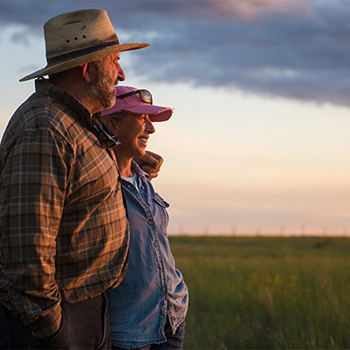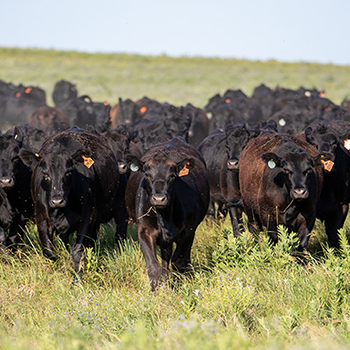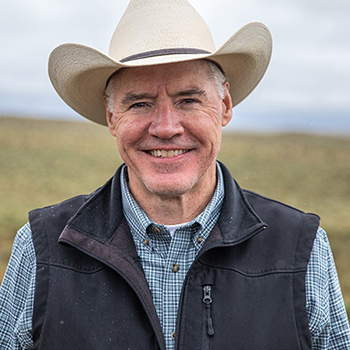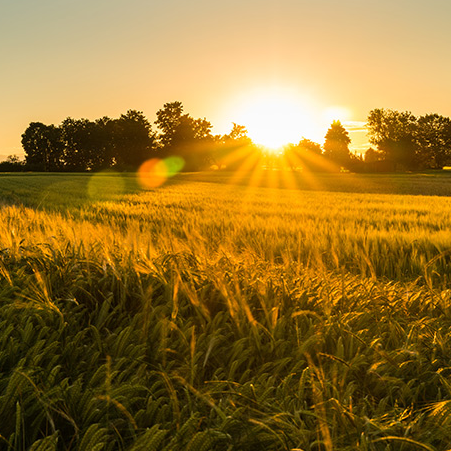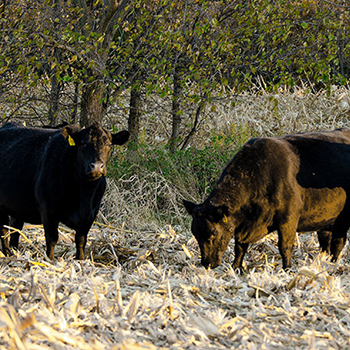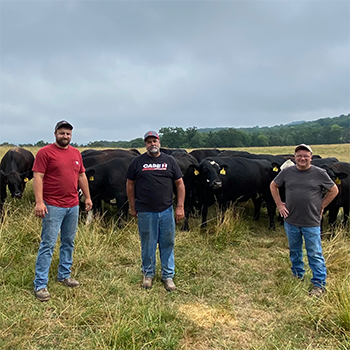
Rejuvenating Depleted Soil With Cover Crops and Livestock
Tips to increase pasture and cropland productivity.
When you want to rejuvenate tired fields and restore balance to the soil biology, you need to put more carbohydrates back into the soil to “wake up” the soil microorganisms. This results in healthier soil and more forage.
“When you get things back into balance, everything else falls into place,” says Kevin Elmy of Friendly Acres Farm, east-central Saskatchewan, Canada.
Elmy regularly consults with producers regarding ways to improve pasture production and work on regenerative management systems. He often presents at winter meetings devoted to cover crops and soil health.
Elmy recounts an example about a family farm presented by Jay Fuhrer: “Grandpa was a great farmer. He could throw any kind of seed at the ground and get a bumper crop. The dad was also a pretty good farmer, but not quite as good as grandpa, but he had good crops. The son, however, was struggling to make it work.”

[Getty Images] |
Fuhrer, a soil health specialist for the Natural Resources Conservation Service, explained it all ties to carbon in the soil, Elmy explains. “Grandpa had high carbon, dad had medium carbon, but by the next generation, it was dwindling. It’s important to manage the carbon.”
Elmy recommends comparing the soil in the field or pasture to the soil in the fenceline. Notice the depth of the A horizon — the darker, top part of the soil, usually darker due to higher organic matter. What does the soil aggregation look like? Noticing differences in the two soils will indicate whether your soil is coming or going and whether you are inadvertently overgrazing or mismanaging the grass.
In Ohio it’s estimated about 50% of the carbon in the soil is gone — compared to what it was prior to breaking it up for farming.
“I think the numbers in Saskatchewan would be similar,” says Elmy. He references author David Montgomery, a geologist from the University of Washington, whose book Dirt: The Erosion of Civilizations claims basically every civilization that grew and then collapsed failed because their soils fell apart from overuse and were no longer fertile.
One of the interesting cases is the Persian Empire. This early civilization in the “fertile crescent” in the Middle East, between the Tigris and Euphrates rivers, was where several early civilizations flourished, thanks to fertile soil and irrigation from the rivers. Early farming efforts and advances in agriculture blossomed, enabling civilizations to grow in both size and complexity. This area is now Iraq and Iran, and mainly desert, due to the way those early farmers mismanaged that soil.
“The Aztec civilization in Central America did the same thing. Soil deterioration also happened in Greece and Rome,” says Elmy. “In North America, we are currently in the same process, creating bacterial-based soils, which are addicted to inputs.”
He says he thinks of ranchers not as cattle producers, but as grass managers. Ranchers grow grass to feed cattle. Cattle are the best tools for managing the grass and for solving the problems of over-cropping on a farm.
Fuhrer illustrates ideal grazing by taking a grass plant and balancing it on his finger. Once it’s balanced, he says, “There’s 50%, and that’s what you should be leaving when you graze.”
“Feed tests [Fuhrer has] taken from the top 50% of that plant versus the bottom show that the top half has superior feed values,” says Elmy. “If you are taking just the top half (the best nutrients) and leaving the bottom half to enable that plant to fully recover (and recover more quickly), you’ll have better feed quality for the cattle and more production from the cattle and the pasture — and the farm.”
Elmy says Clayton Robins, another grass expert, discourages the grazing of perennial forages in August, September or October because those plants are trying to set up for overwintering. He recommends using annual crops during this period to fill that gap.
“They won’t overwinter, and you can graze those acres very hard,” he says.
The challenge for many livestock producers, says Elmy, is they don’t grow crops. Many farmers don’t own cows and don’t want to own cows, but livestock can benefit their land — grazing at the right time to help improve soil fertility.
“I haven’t seen many livestock producers who are long on feed, so this is a great opportunity to partner with someone who grows crops,” says Elmy. “Partnering with someone who does can be a win-win situation, if you can find a farmer who wants to diversify his cropping system and reduce the chemical load on the land and reduce the fertilizer needs.”
Cattle solve many of the issues we face in modern agriculture. The cattle do the trampling and leave litter and natural fertilizer, Elmy says. “On our farm we haven’t bought nitrogen for 15 years and haven’t bought any phosphate or potash for several years. By having cattle on the land at the proper time, my inputs for growing crops are greatly reduced and farming is fun.”
Editor’s note: Heather Smith Thomas is a freelance writer and cattlewoman from Salmon, Idaho.
